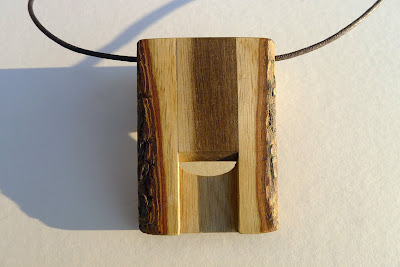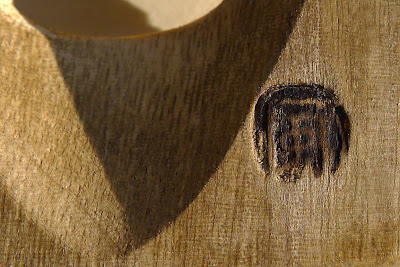At the bottom of page 10 of 1903 A.O. & E.C Howe's musical instruments catalog, there is an insert for a « Magic Flute ». It's a metallic nose flute, nickel plated.

Some facts...
Fact 1 • In his 1904 trade-mark documents, James J. Stivers wrote about the brand "Humanatone" : «
This trade-mark has been continuously used in my business since July 6th, 1903 ». Let's say at the same time than the Magic Flute.
Fact 2 • I've never seen (weak fact) any other ad for a « Magic Flute »
Fact 3 • It exists a metal nose flute stamped « Magic Flute », dating from these times, and wearing 2 numbers, one for Australia and one for New Zealand. I reached the Australian patent office, and they confirmed those numbers refer to trade-marks registration numbers and not patents numbers. They are "N°40634 AUST" and "N°22231 N.Z". I found no traces (documents) for their registration.
 Fact 4 •
Fact 4 • The "Magic Flute" has the **exact** same shape than the first Humanatone (the one with the rounded top [see
this post]), including the folded flaps and rivets, and the rounded rectangle air entrance.
Fact 5 • There was a "Magic
Nose Flute". I don't know when it began to be sold, but I found many ads for it from 1928 to 1950.
Fact 6 • In the 1928 Johnson Smith Novelty Catalog, there is an advertisement which shows a drawing which is a part of the drawing displayed on a Humanatone user manual (see
this post). Here are they :

 Fact 7 •
Fact 7 • In the Nov. 1928 issue of Popular Mechanics, an advertismement for the Magic Nose Flute explicitly says : «
The Magic Nose Flute, or Humanatone...». (same inserts in the Oct. 1929 and Nov. 1930 issues)
 Fact 8 •
Fact 8 • In the very first issue (#1, Summer 1939) of the Superman comics, there are two advertisement inserts for a nose flute : The first one refers to the "Magic Nose Flute", and the second one to the "Humanatone" (for real with a mistake, since it is printed «
Humatone » at the very end of the text).

 Fact 9 •
Fact 9 • (at least) the 1940, 1944, 1947 and 1950 issues of Johnson Smith Novelty Catalog displayed the same insert, with minor differences between 1940 and 1944 : the price evolved from 10¢ to 15¢, a text was added besides the boy's head («
You can play it if you can talk »), and the little insert text below was changed from «
Play Marches, "hot tunes",... » to «
Play "hot tunes", swing music,... ».
There is also a change at the end of the description : the following passage was suppressed : «
Most anyone can play it and the performer with the true "gift of music" will feel it, with very little practice, one of the most easily controlled music producers it is possible to imagine. »
Anyway, from (at least) 1940 to 1950, there are no mentions of the brand Humanatone (which was officialy bought by the Fred Gretsch Mfg. Co on Jul. 19, 1947, to brand the modern plastic version which appeared on the market between Jan. 1940 and Autumn 1943 [see
this post].
Here are the 1940, 1944, 1947 and 1950 inserts :




---
Now is the time for questions ...
Question 1 • Was the "Magic Flute" a separate product or was it the very first version of the Humanatone, before the brand Humanatone was registered ? It is a real possibility, since the Magic Flute is the exact clone of the first Humanatone, and that since the brand Humanatone was «
continuously used in [stivers'] business since july 6th 1903 », it seems difficult to be used in a catalog of this very year (catalogs were generally printed at the end of the previous year, or at least at the beginning of the current year).
Question 2 • Is the Magic Flute showed on the pictures above the "same" Magic Flute ? And in this case why was it stamped by Australian and New Zealand registration number ? Was it a Humanatone forgery ? (difficult to imagine, since it has the very shape, including little details...). Was it a specially branded Humanatone for AU and NZ by James J. Stivers ? Why a specific brand ? Or by someone else ? Who ? Or was it a different "Magic Flute" than the one advertised on Howe catalog ?
Question 3 • It appears obvious that the "Magic Nose Flute" and the "Humanatone" were the same products. Were they both produced by the James J. Stivers company ? If so, why ? Were there a brand (Humanatone) dedicated to "serious" music shops and one (Magic Nose Flute) for novelties and toys catalogs ? Or did another manufacture buy the patent to Stivers for a parallel production (this would sound strange that Stivers had accepted, because both products were direct competitors, at least between 1928 and the 1940s).
Who continued to produce the metallic Humanatones under the brand Magic Nose Flute after that Fred Gretsch bought the Humanatone brand ? Was that the Stivers company, which already had the machines and know-how ?
Question 4 • Is there a link between the "Magic Flute" and the "Magic Nose Flute"? In this case, the link between "Magic Flute" and "Humanatone" would be traced (see question 1)
Question 5 • What year the "Magic Nose Flute" stopped to be produced/sold ?
If any of the readers of this blog has answers, or posess musical instruments catalogs, or Johnson Smith catalogs, notably prior to 1928 or later than 1950... Or any material (magazines, photos, showing the Magic (Nose) Flute... Please please please, help me!
>> See the following topic :
A Humanatone and clones chronology
---







































